A wild tree fruit that eats like a nut loaded with carbohydrates, protein and fat, and tastes a bit sweet like squash with hints of dates? Yes please.
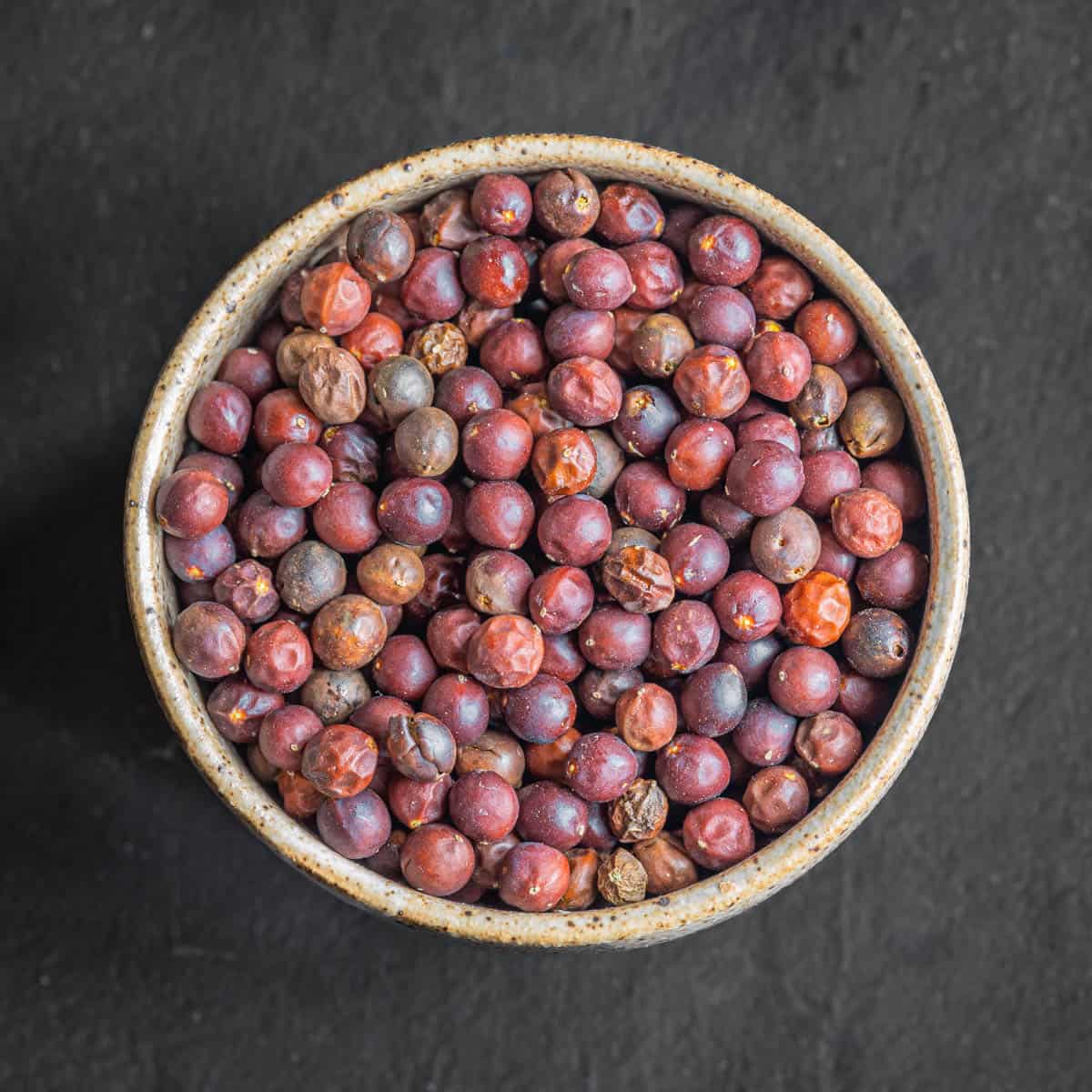
If you're in the Midwest and looking for something interesting to forage in the winter, our common Hackberry (Celtis occidentalis) is a tree that you should meet. Since there's a number of related trees, for this post I'm only referencing the common hackberry, since it's the only one I've foraged and eaten in quantity.
I'd heard about the hackberry tree and it's fruit, and I kept on thinking "why can't I find any any?". As is often the case, I'd probably walked by hundreds of them without knowing it. My first experiences with the tree went like this: during morel season, I'd walk around places with elm trees looking for morels, and I'd see lots of area that looked "elmy" but didn't have as many morels as I would've hoped.
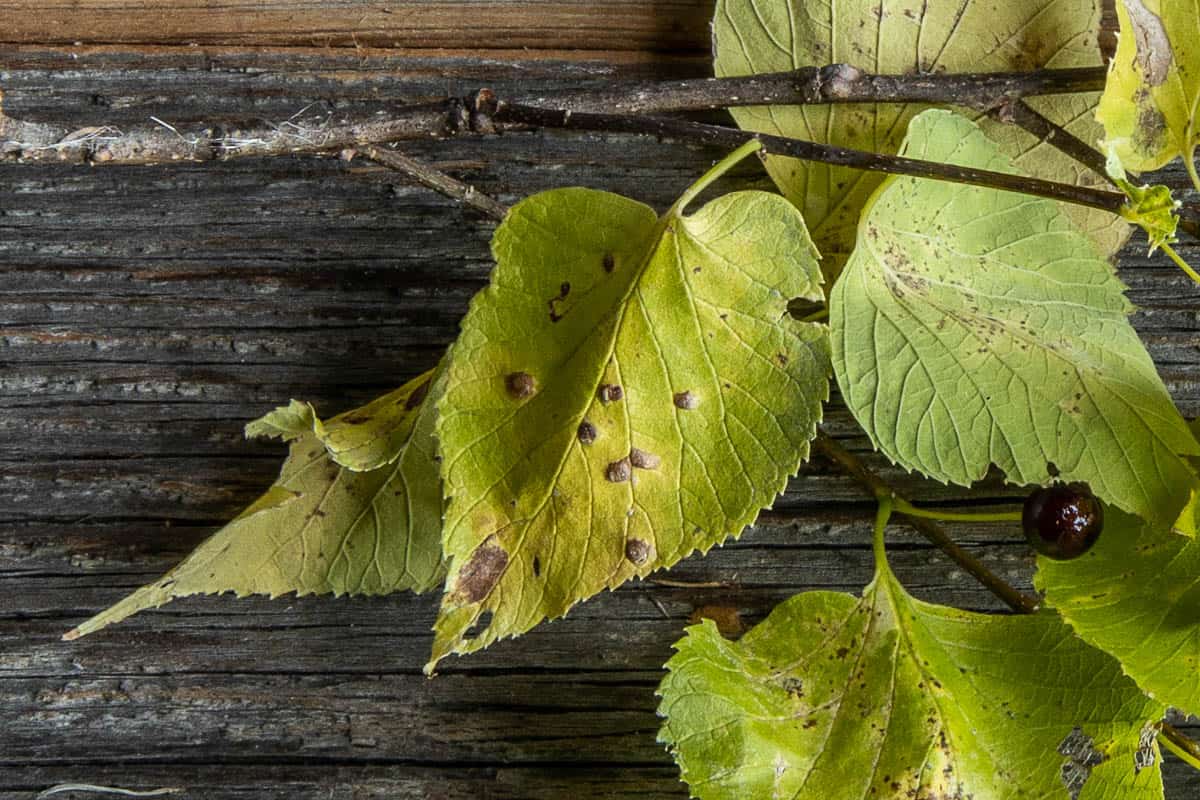
I'd walk by a tree, take a look at a leaf, notice some strange growths on the bottom of the leaf and think "well that's a weird elm". later in the season I noticed those same weird elms made small pea-sized fruit. Arborist, I am not.
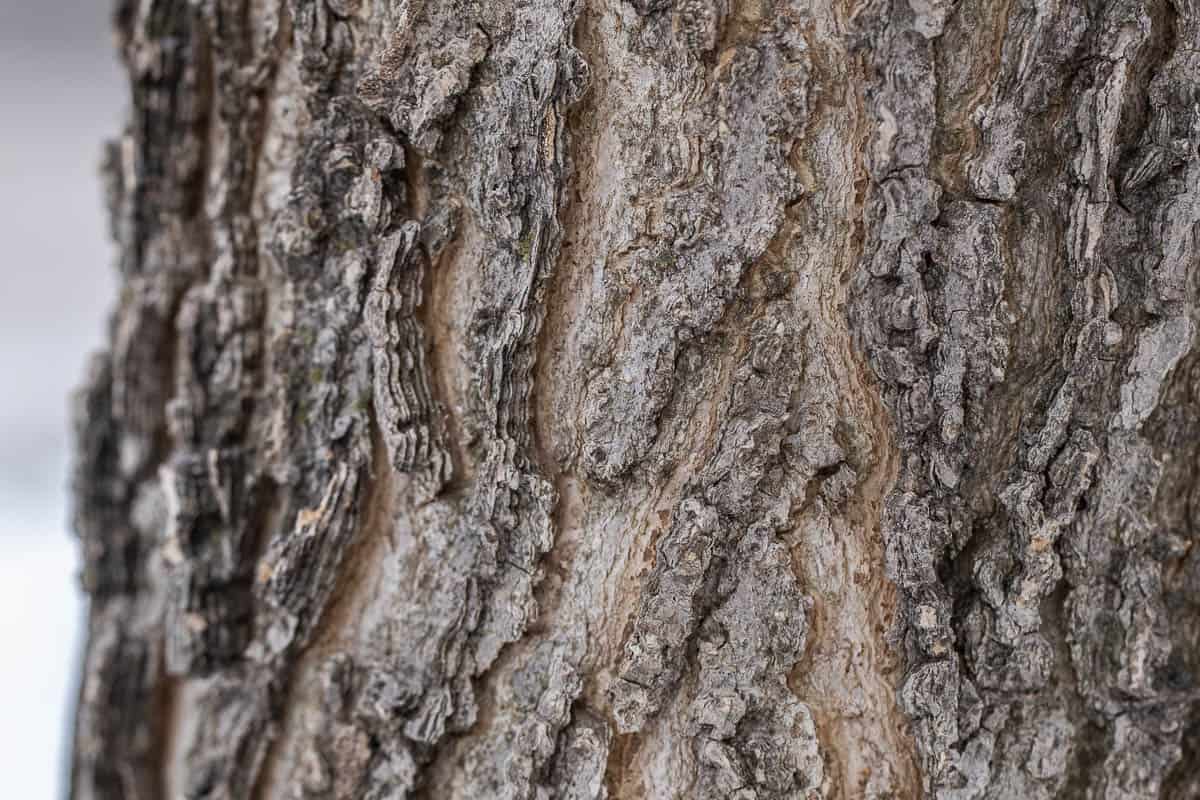
I know now that the trees with the strange berries were hackberries, and, as the leaves look similar to elm leaves (both are in the Ulmaceae), It's understandable how I could mistake them at a glance. But, in retrospect, I should've known better, since I knew that elms make samaras, not round, green or purple fruit.
"In sheer survival value, it (hackberry) is unsurpassed"—Sam Thayer
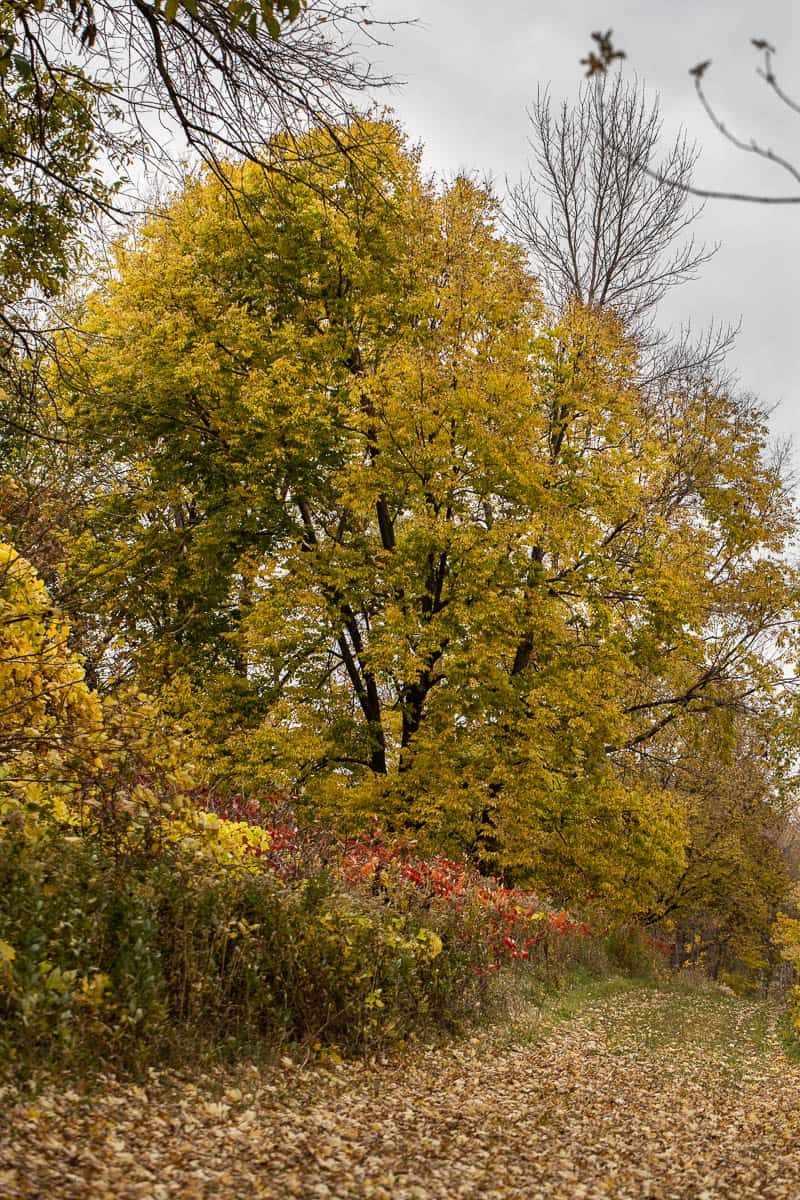
History
There's a wealth of history hidden in the hackberry. Sam Thayer's account of it in Nature's Garden was (as usual) the most helpful and comprehensive account, but Daniel E. Moerman's book on ethnobotany was interesting too. Here's a few highlights from those two books.
- Hackberries were found in the tomb of Peking Man, dated to be 500,000 years old, which has the potential to make them the earliest known plant food eaten by humans!
- They were also found at the Çatalhöyük site in Turkey, which dates to about 9000 years old.
- Evidence of their use is widespread around the world on many continents, from Peru to China, Sudan, Indonesia and South Africa, and of course, North America.
- Many Native American tribes make/made use of the berry. Noted by Moerman were: Acoma, Apache, Chiricahua & Mescalero, Hualapai, Laguna, Navajo, Papago, Pueblo, Tewa, Dakota, Keres, Meskwaki, Omaha, Kiowa and Pawnee tribes.
Now that, is a lot of ethnobotanical history.
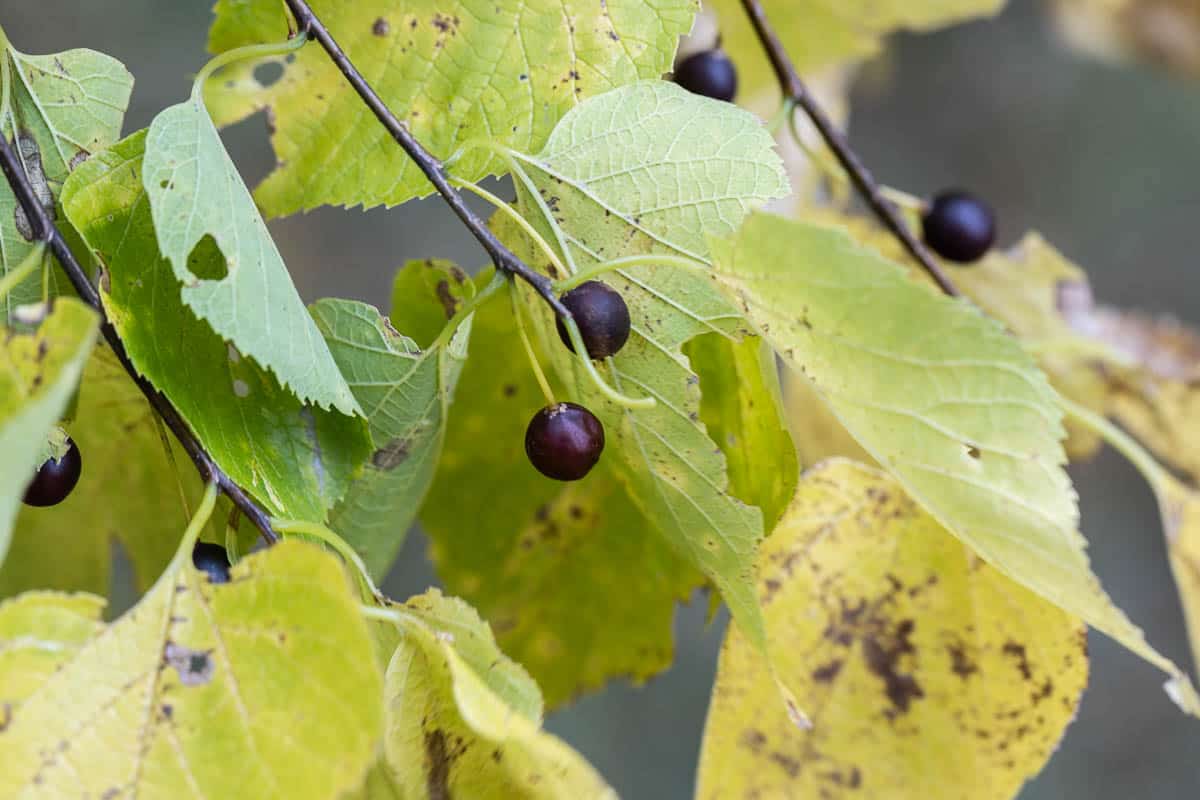
Think nut, not berry
The fruit of the hackberry tree is a small, hard fruit made of a paper-thin layer of sweet tissue surrounding a hard seed. It's unassuming, and at first glance/taste you may wonder "how the heck could you cook hackberries?!" but looks can be deceiving.
There's tons of things you can make with them, but it's better to think of the hackberry as less of a berry, and more as a nut or seed—more on that in a moment.
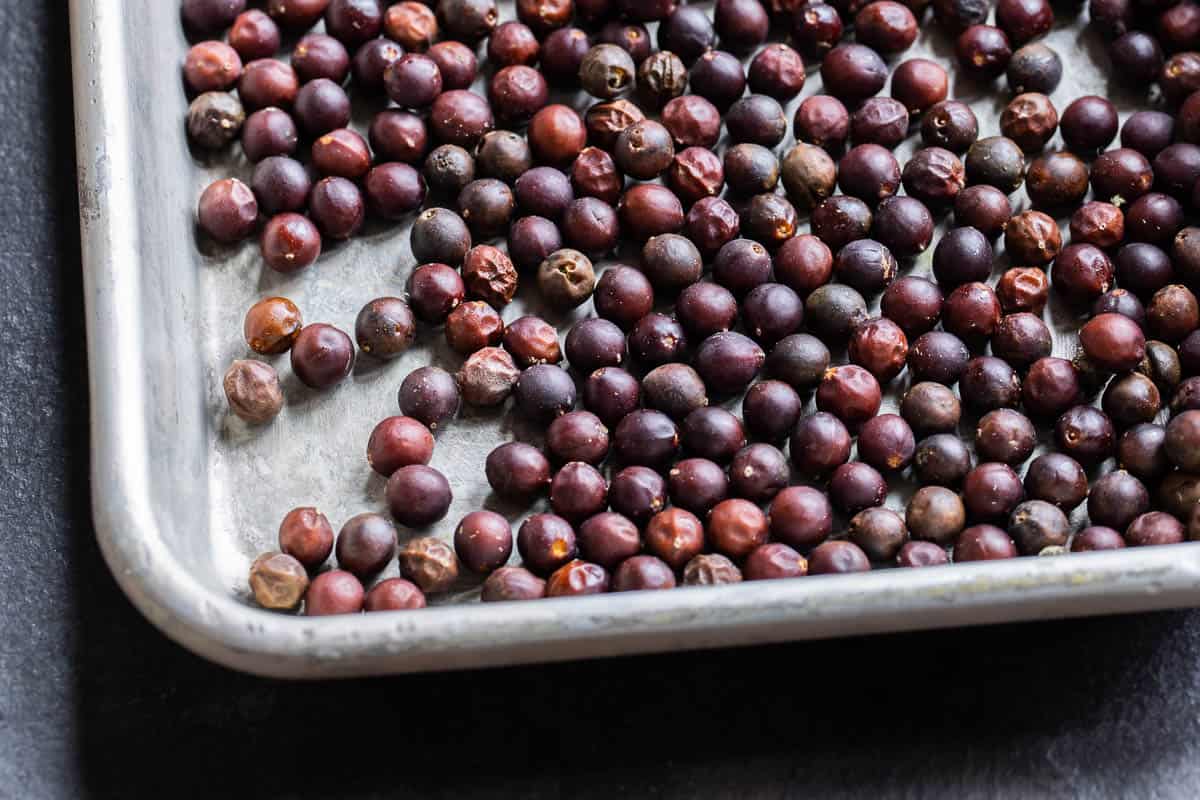
Harvesting (Nov-March)
Once I noticed the brown seeds and corky, worty bark, I started seeing hackberry trees everywhere. On Cathedral hill in St. Paul where my test kitchen is, they seem to line the streets. Picking fruit on the street is not as private as I like though, so I went to a few places I know that are "elmy" and there, I found oodles of hackberries I can pick without the judging eyes of civilians.
To be more specific, flood plain forest, and forests with other species like cottonwoods and elms should have plenty of hackberries. As a bonus, in the spring you can go to the same types of forests for sochan and wood nettle—two of the finest wild greens I know.
Use a fruit hook to reach low branches
Once fall comes around, the pea-sized berries will be ripe, with the ones I've picked varying in color from dark maroon to orange or brown. You can pick hackberries while the leaves are still on the trees, but it's much efficient to pick them after the leaves have fallen.
Using a fruit hook, or even the hook of an unraveled coat hanger (my personal favorite) can make getting the berries easier, since the hardest part can be reaching the branches. I also use a blicky attached to my waist so that I can use both hands to pick. If you don't have one, this one is what I use.
The berries are hard and durable though, so you have a good window for harvesting from about September, lasting through much of the winter in the Midwest. They can even last through the spring thaw, like Kentucky Coffee Tree pods.
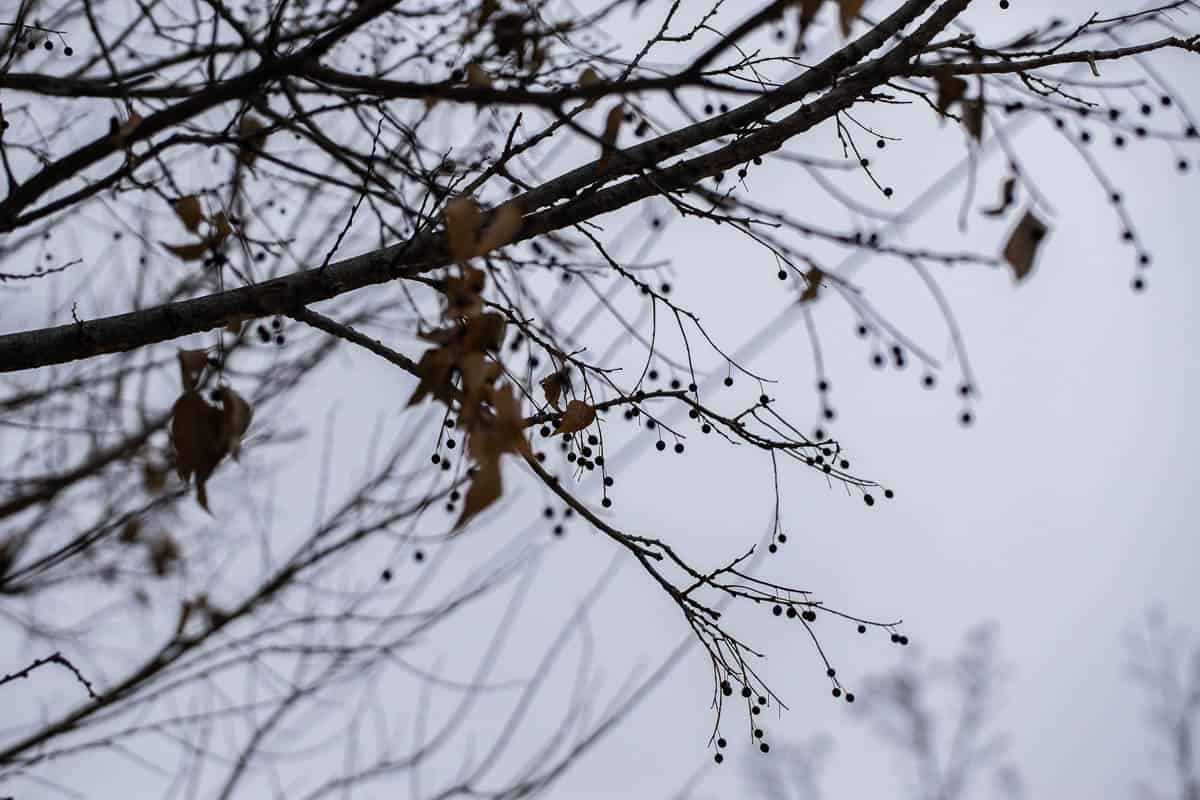
Picking hackberries is not a fast process, and after a few trials over the past two years I'd say that I could get about 1 quart an hour. "Quick harvest" will not be a word that comes to mind, but in the winter, a little meditative practice can be nice.
Good things come in small packages, and like Sam Thayer mentions in Nature's Garden, the small amount of berries are worth a lot more calories than a comparable amount of other fruits in that they contain fat, sugar, and carbohydrates. In fact, Sam goes so far as to say "In sheer survival value, it is unsurpassed".
Cooking
"But if they're almost all hard seed, how could you ever cook with hackberries? Some people might ask, and it's no wonder, since multiple wild food guides I own fail to mention that the seeds are edible at all.
One book I consulted (and won't name) bemoans the fact that there's "so little flesh" and then suggests spending a few hours collecting berries, simmering in water, straining and discarding everything to make sugar syrup!
You might as well not pick them in the first place and leave them for the birds, at least the birds don't waste them. Hackberries may be rich in carbohydrates, protein and fat, but that's only if you consume the whole thing. Id' wager the thin, papery skin is mostly sugar.
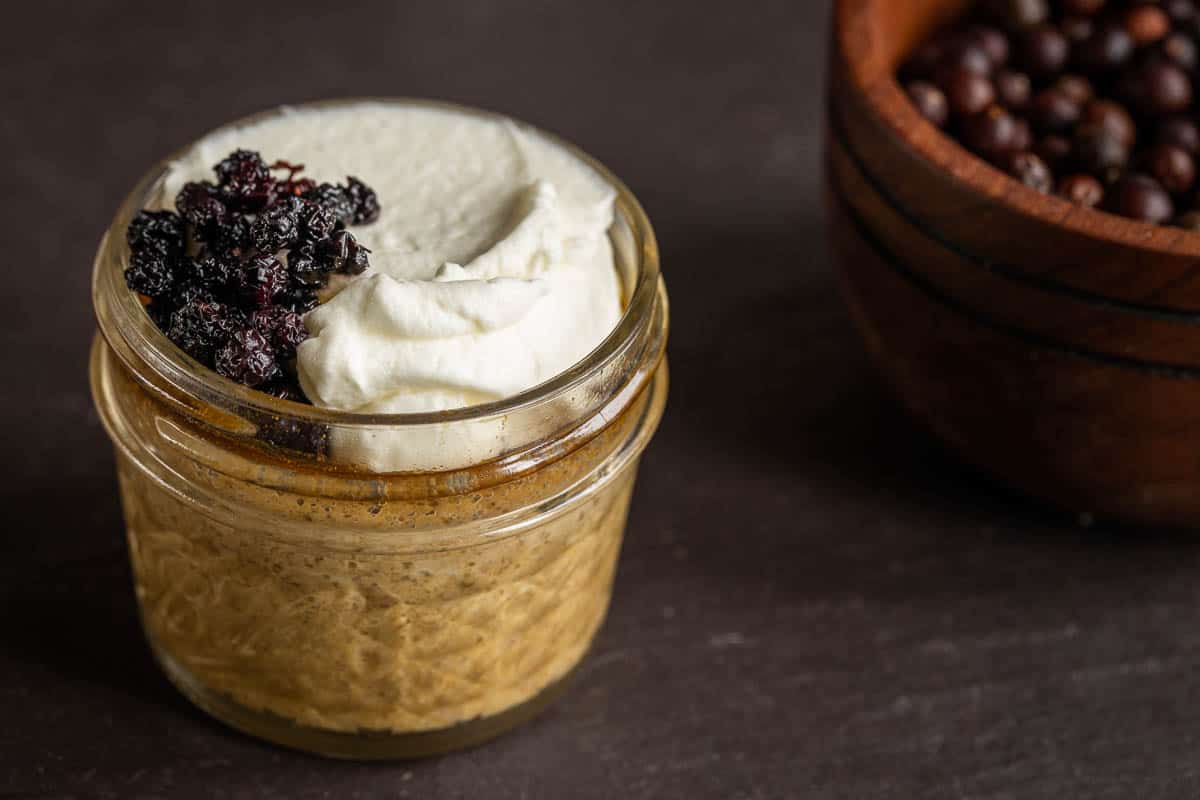
There's a number of things you can do here depending on your preferences, more specifically your tolerance for things that are crunchy. Hackberries are mostly hard seed, and that seed won't ever completely break down. It's not gritty like dirt from a mushroom, but it's something you'll notice, especially if you don't sift or strain them.
People have eaten, and enjoyed these for a long time though, so don't throw the hackberries to the birds just yet, I have a couple tricks that will change the game for you if you've tried them before and thought they weren't worthwhile.
Hackberry Milk
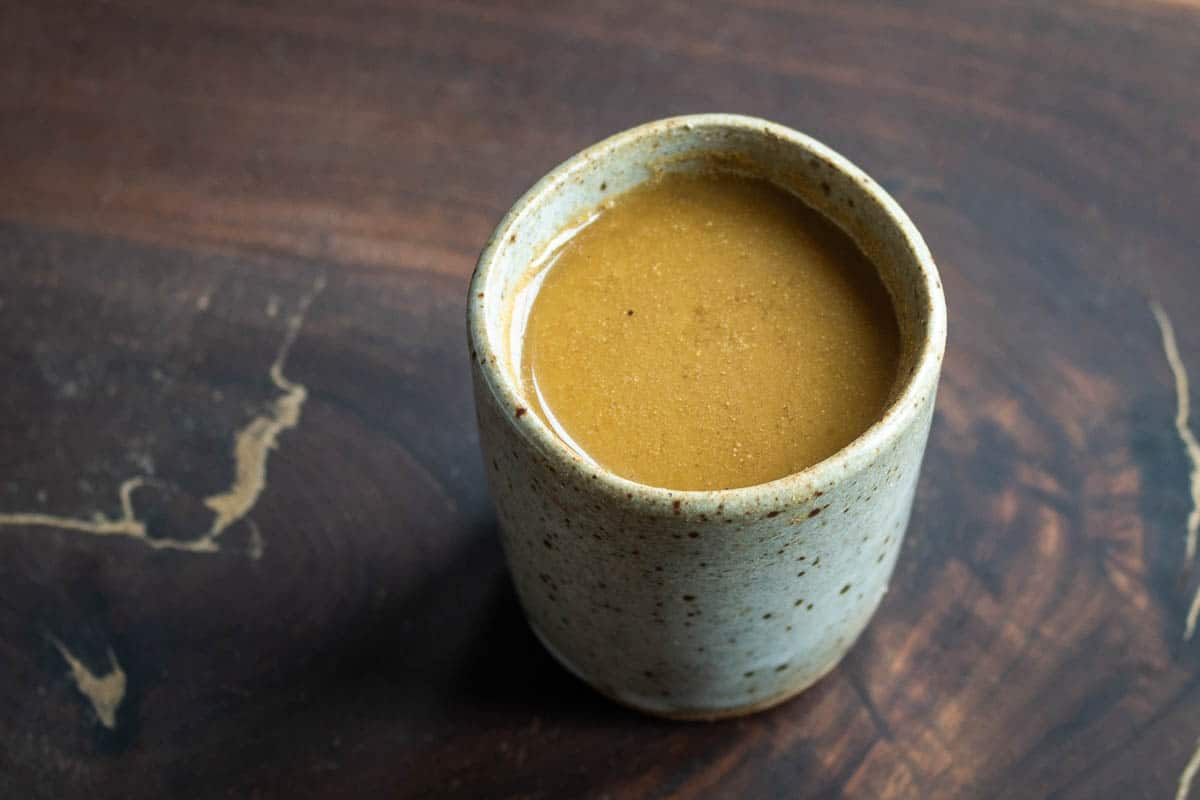
A sort of rustic nut milk that tastes faintly of dates, hackberry milk is one of the easiest things to make with hackberries, especially if you find you don't care for the texture of the seed, so, if you're new to them, this is where I'd suggest you start.
The technique is an ancient one, also used with mashed hickory nuts, shell and all. See the example recipe in this post for the break-down. The nice part about the hackberry milk is that you can get all the fruity, nutty goodness and nourishment from the berries without having to deal with grit.
Hackberry milk makes an fine drink served warm, spiked with a dash of maple syrup and a touch of cinnamon. You can also use it for cooking, as I've illustrated with my hackberry souffle and bonet pudding.
Mashed / Ground
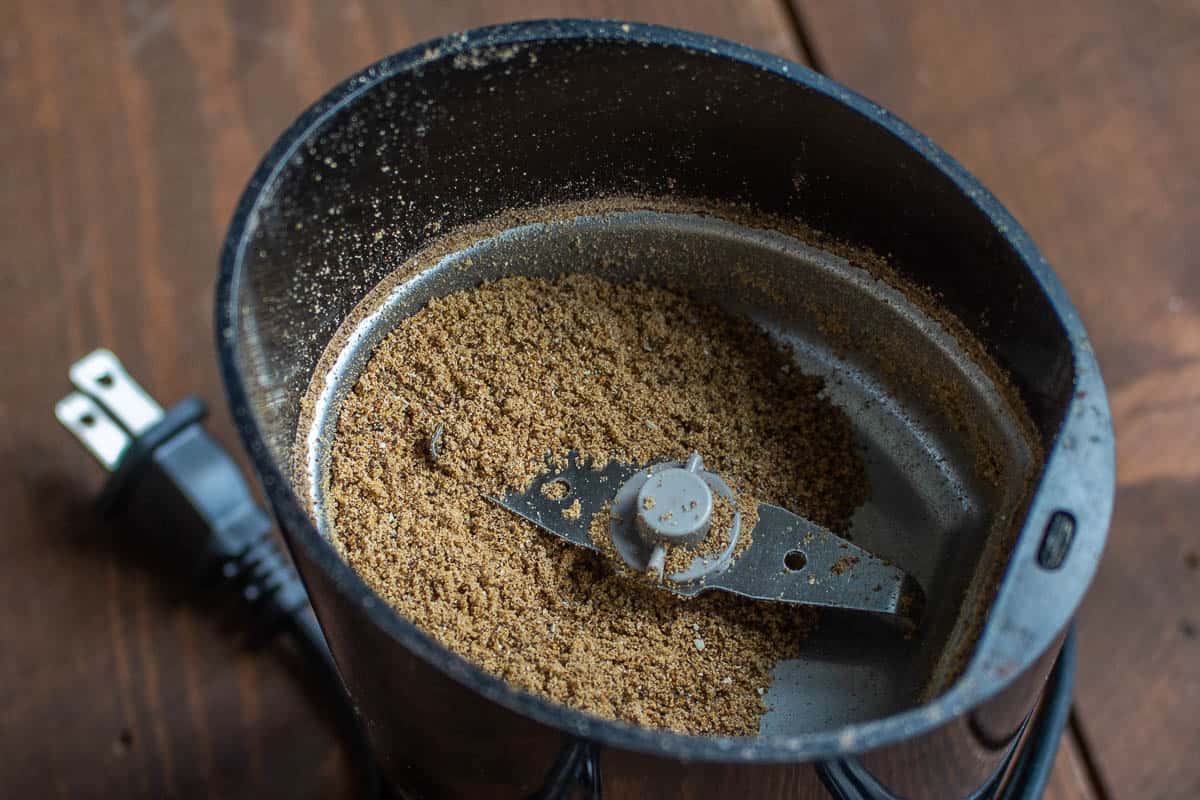
The simplest method of consuming hackberries is just bashing dried hackberries into a meal, seeds and all. After they're ground up they could be mixed with ground nuts and dehydrated fruit ground to a powder and plenty of other things, similar to Euell Gibbon's original "wild candy bar".
The texture of the seeds may not for everyone, but don't let the idea of crunchy berries scare you away. Small wild cherries are another fruit people have eaten for millennia and they're also consumed ground or pounded, shell and all, by Native American tribes, as well as people in Siberia (chokecherry / Prunus virginiana and bird cherry / Prunus padus, respectively). Hackberry seeds aren't nearly as crunchy as cherry shell fragments.
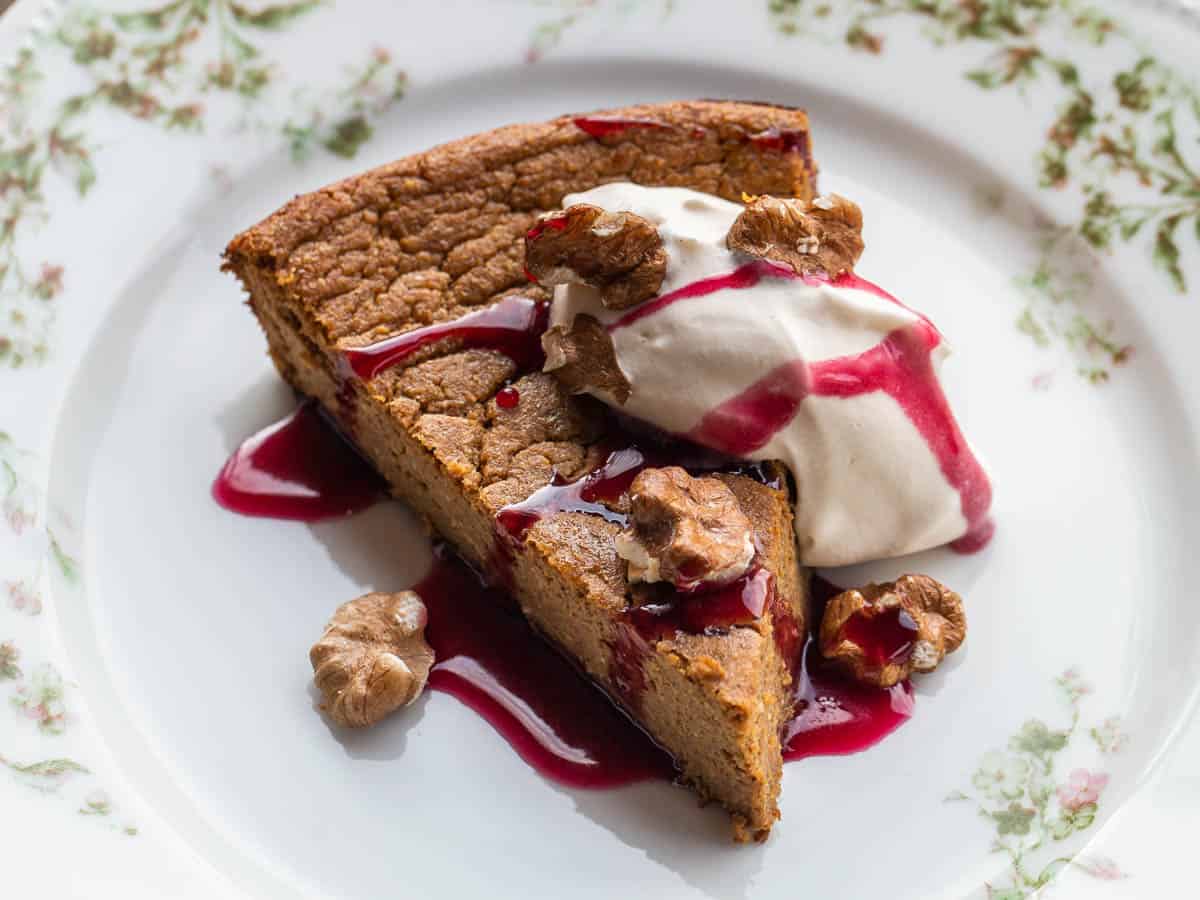
Wasna, or pemmican enjoyed by Native Americans of the Great Plains, is made from dried, mashed chokecherries mixed with dried meat and fat.
The texture of the shell fragments are crunchy, and noticeable, but, when I spoke with my friend Linda Black Elk this year, she told me that the elders loved the crunch of the cherry shells. The texture of ground shells is said to be similarly appreciated with desserts made from bird cherries in Russia, too.
Sifting and Straining
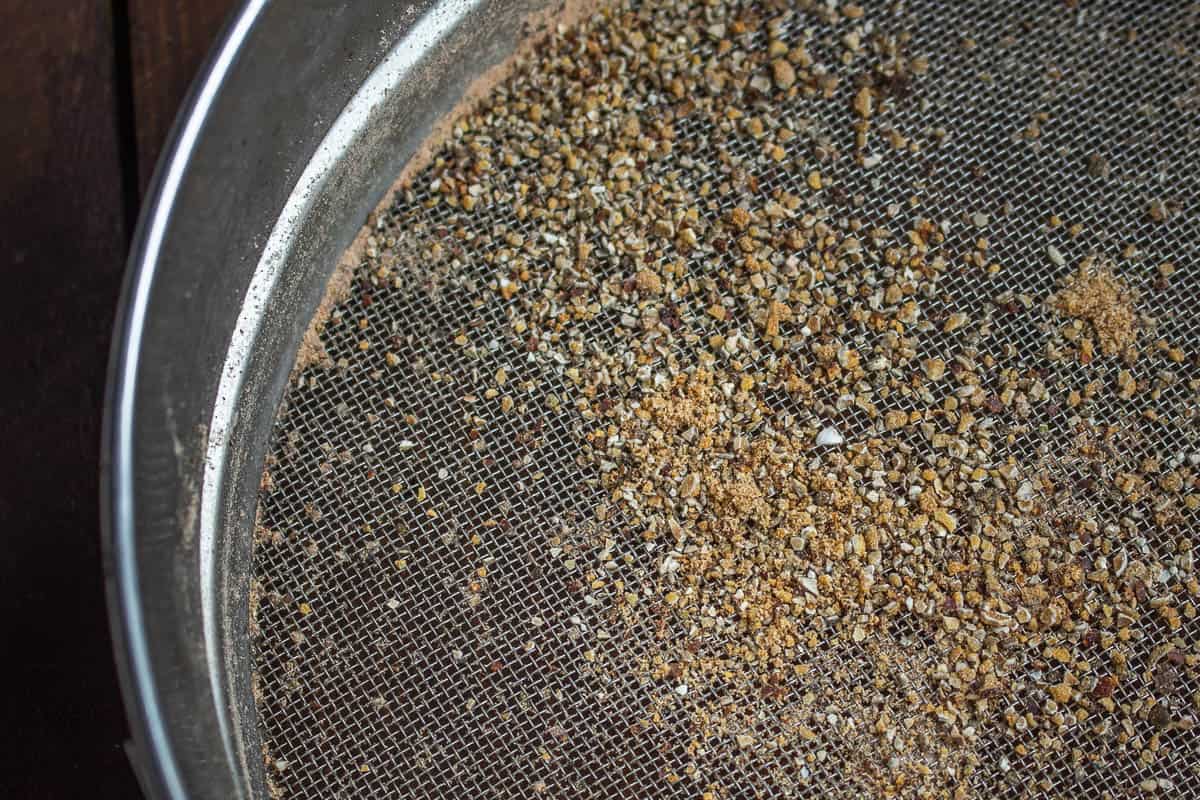
Straining or sifting are two techniques you'll want to use to mellow the texture of hackberry seeds. Sifting is the best I've found for cold preparations like the Euell Gibbons Hackberry Candy Bars below.
After sifting hackberries ground in a spice grinder (I use a tamis sieve, but a flour sifter would work) the largest particles of seed can be discarded, and the smallest ones, which have a softer texture, will pass through.
Note that to be able to sift hackberries, they'll need to be completely bone dry-I put them in a dehydrator on high for a few days and forget about them. Fresh hackberries will probably make a paste in the spice grinder.
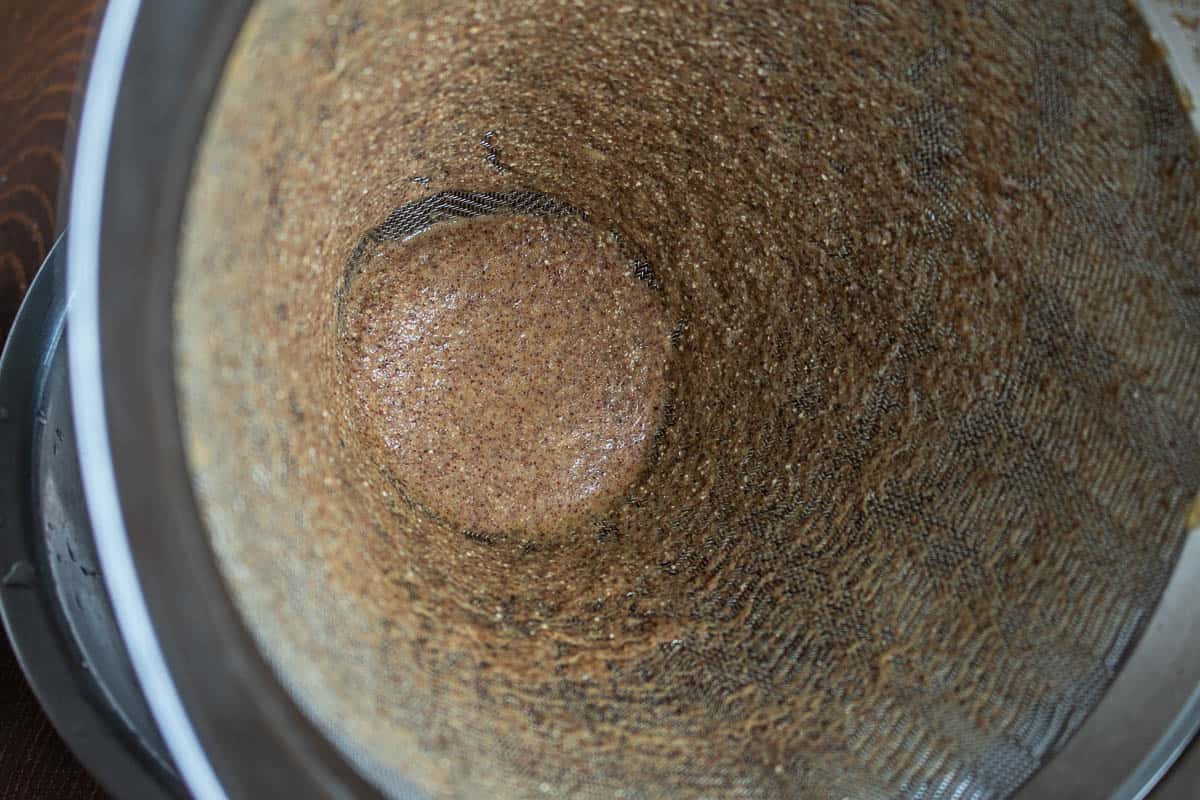
Straining is for liquid preparations. Like sifting, the goal here isn't to completely remove the seed particles and give you a velvety-smooth liquid, since some of the very small particles will get through the strainer, rather, straining will decrease the total proportion of seed particles to an amount that isn't bothersome. Cheesecloth will make the smoothest milk.
After sifting or straining, and then, most importantly, mixing with other ingredients, there'll be just enough hackberry texture to be interesting, but not enough to turn off skeptics. Trust me.
Euell Gibbons Hackberry Candy Bars
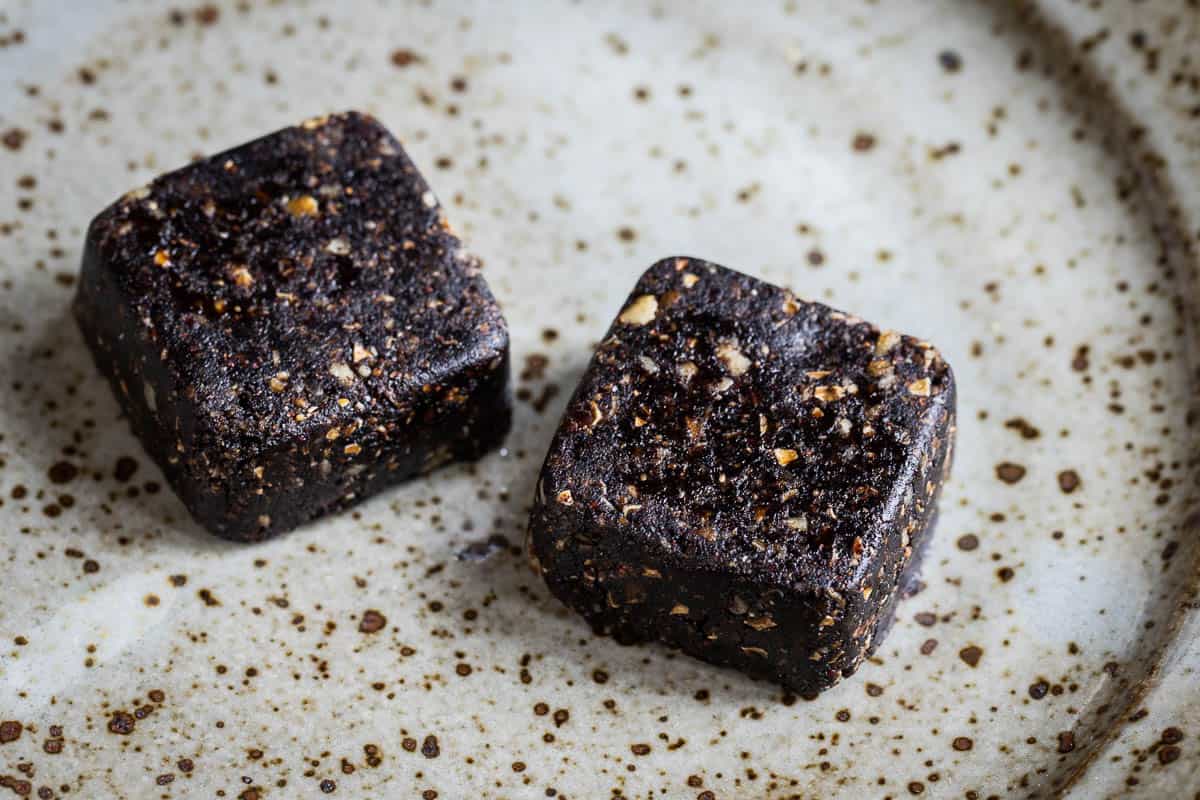
I had to try replicating Euell Gibbons wild candy bar. I ground some hackberries to a meal, then combined them with equal parts ground dried wild blueberries and toasted hickory nuts by weight, binding the mix with just a touch of maple syrup.
The flavor is excellent. The texture won't be for everyone. But, like Linda's elders and the chokecherries, some people may find it strangely addictive, and at the very least tolerable.
You can tweak the hackberry seed/fruit/nut ratio however you like, and, ground finely, in the right proportion, they make an interesting conversation piece, with a sustaining quality like a granola bar from a planet with intense gravity. After eating two one-ounce portions of the hackberry-fruit-nut bars I made, I was full enough I forgot to eat lunch.
It's easy to see why humans and animals have had a relationship with the fruit dating back to antiquity, since, mixed with nuts and fruit, you'll have a serving of fat, protein, and carbohydrates that could sustain you, at least for a time. The fact that hackberries are delicious, and taste like no other fruit you've had, is a fun bonus.
Recipes
Hackberry Milk
Ingredients
- 1 cup hackberries
- 3 cups water
- Maple syrup to taste, optional
- Pinch of ground cinnamon optional
Instructions
- Combine the hackberries with the water and puree in a blender for 45 seconds to one minute, or until you have a smooth beige liquid.
- If you don't have a highspeed blender, grind the berries in a coffee grinder first before blending.
- Pour the hackberry milk into a pot, cover, and simmer on low for about 30 minutes.
- After 30 minutes, strain the hackberry milk through a strainer, resisting the urge to press the solids through. Swirl the strainer, or let it drain naturally, just don't press on it.
- Alternately, you can cook with the hackberry milk as-is, since, after diluting with other ingredients (if you're making soup, for example) you'll barely notice the texture. You can also let the seed fragments settle and pour off the top layer of liquid.
- To serve as a drink, season the hackberry milk with a pinch of cinnamon and a splash of maple syrup, heat, and serve in small glasses. If you taste it and want a stronger flavor, you can cook it down to concentrate it.
Hackberry Candy Bars
Ingredients
- 38 grams dried hackberries dried in a dehydrator on high until brittle, at least 24 hours.
- 38 grams dried blueberries
- 38 grams hickory nuts
- Drizzle of maple syrup 1-2 teaspoons
- Tiny pinch fine salt
- Tiny pinch of ground cinnamon
Instructions
- Lightly toast the hickory nut, cool and reserve.
- In a spice grinder, grind the hackberries to a coarse powder.
- Grind the blueberries or other dried fruit to a powder.
- Finally, grind the cooled nuts to a powder.
- Transfer the nuts, hackberry and blueberries to a bowl, mix with the tiny drizzle of maple syrup and mix to form a paste. Pack the fruit-nut paste into small candy molds and chill for 30 minutes to hydrate, or roll into balls or whatever. It's an interesting trail snack, and packed with energy.
Notes
Further Reading
- Sam Thayer: Nature's Garden
- Daniel E. Moerman: Native American Food Plants

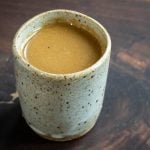
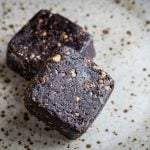
Michelle
After gathering about 3/4 of a gallon of hackberries this autumn, I'm now trying to make something with them! I am starting with the milk (on the stove as I type). I do have to contest one comment you made, about birds not wasting the berries. I object! The number of berries I found with one little nip out of them from the blasted starlings!!! Haha! Of course, I mean that just with humor and light heartedness. <3 Thank you for these ideas in your post! Looking forward to using another source in my backyard. I already tap my walnut and maples. I want to try tapping my backberries this year, and, in a couple of years, my birches. Tapping the hackberries will be purely experimental based on heresay - there's no guidance out there for it! ah!
Alan Bergo
Blasted starlings! The twenty blackbirds in a pie were actually starlings, so there's another idea. 🙂
Michelle
In a pie is where they rightly belong, methinks!
Michelle
Hackberry milk was very interesting. I used it on some congee rice, with some walnut syrup, ground hackberries and cardamom on top. It was delicious! 2 out of my 3 children approved. I want to try making a drink of the milk, making it creamier and spicier - maybe some coconut milk or cream (we're DF), with some cardamom is what I'm thinking. However, a child spilled my entire jar of hackberry milk in the fridge. So, alas, that will have to wait for another day!
Thinking of trying the fruit leather. I have lots of apple sauce I canned in the autumn...hmmmmmm!
Michelle
This was such a fun read! Thank you! I’ve known for years that hackberries are edible, but mine haven’t given enough to bother trying to harvest. Until this year. Either it’s just a bumper crop of a year, or it’s because my trees are very happy (and healthy!) with the wild gardens we installed around them last autumn, but I have gathered nearly a gallon’s worth of berries! (As opposed to a tiny handful as in previous years. And when I look up the trees are completely covered!)I am wondering, is there a way to quickly filter bad berries from good ones? Like with nuts you discard the floaters. While ranting my berries this morning I noticed that some float and most sink. So I wondered if that could be accurate here too (or if it’s just dried ones that would float and fresher ones sink). Thanks!
Alan Bergo
Hi Michelle, so, my assumption here is that the float test for hackberries will be imprecise as there's not really any air space that develops as the seeds dry, unlike something like shagbarks or black walnuts where the nuts shrink and create air pockets, which also makes them float but doesn't mean they're bad. If you see discolored ones that obviously don't look like food I would remove them, but I've never bothered floating hackberries. If you discover any revelations while you're working with them let me know. I'm so glad people are using these, they're such a cool tree!
Michelle
I totally forgot I'd commented here earlier this year. HA! Thank you for your response! I didn't end up doing the float test anyway, because some that floated looked perfectly fine (and tasted wonderful). So I just pulled out the ugly ones. Visually, it seems the darkest berries are the sweetest ones (which makes sense).
sammy rivers
Can you make tea from the hackberry leaves?
Alan Bergo
I can't speak to that. Lots of better things out there IMO.
Deanna
I just learned i have five hackberry trees on my property. Can't wait to try these recipes!
Alan Bergo
Have fun. They're a great plant.
Meghan
Thank you for this awesome article! I just found this after identifying my very large hackberry tree and wondering if I could use it for anything. I am looking forward to trying the berries and these recipes in the fall!
Alan Bergo
Glad you enjoyed it, this was a lot of work.
Mike
Could you run hackberries through a cold press juicer to make milk similar to making almond milk?
Alan Bergo
Not to my knowledge.
Benage
Awesome! Thank you so much for the wonderful article and fantastic recipes.
Sam Schaperow
For some reason my tree got its berries gone. I went to get then the other day, and nothing left.
Elisabeth Ballou
This is so useful & intriguing. Hackberries are abundant in Kansas. I am excited to try these. Thank you!
Nancy Webster
Omg! I grew up in Nashville, TN hearing my father threaten all the time to cut down the big old hackberry which hung over his car parking spot, b/c it was "so messy"!???? No clue we could eat the berries!!! Now living in southern Middle TN & have hackberries galore along the fence rows. Hoping hackberries, etc are not our only food source this winter, but grateful to know we have them!! Thank you for your great value you share in your mailings! Very helpful!
PS: hackberries are weak trees. In the 1994 ice storm in Nashville, we lost over ten of ours.????
Alan Bergo
Thanks Nancy.
Nathan Perrier
The Hackberry trees that line my block east of Lake Harriet are loaded with plump berries. Sometimes I look out my kitchen window on a cold winter day and see dozens of red-breasted robins nibbling on all the fruit.
Angela
Your articles are amazing. Where are you located? Would you come to Duluth and lead a foraging workshop with cooking? I have a homestead and space.
Alan Bergo
Thanks Angela. Deep dives like this one can take months, or years to get all the images of the plants in different stages. I do site visits and events like that. Hopefully things will be a little more normal this year. You can reach out to me directly at alanbergo3 AT gmail.com
Nina
How very interesting! I'm heading out right now to take a look around. This is so exciting!! I would love to try the Hackberry Milk. Thanks.
Alan Bergo
Thanks Nina. It's a great tree, and one of the best things to harvest in the winter IMO.